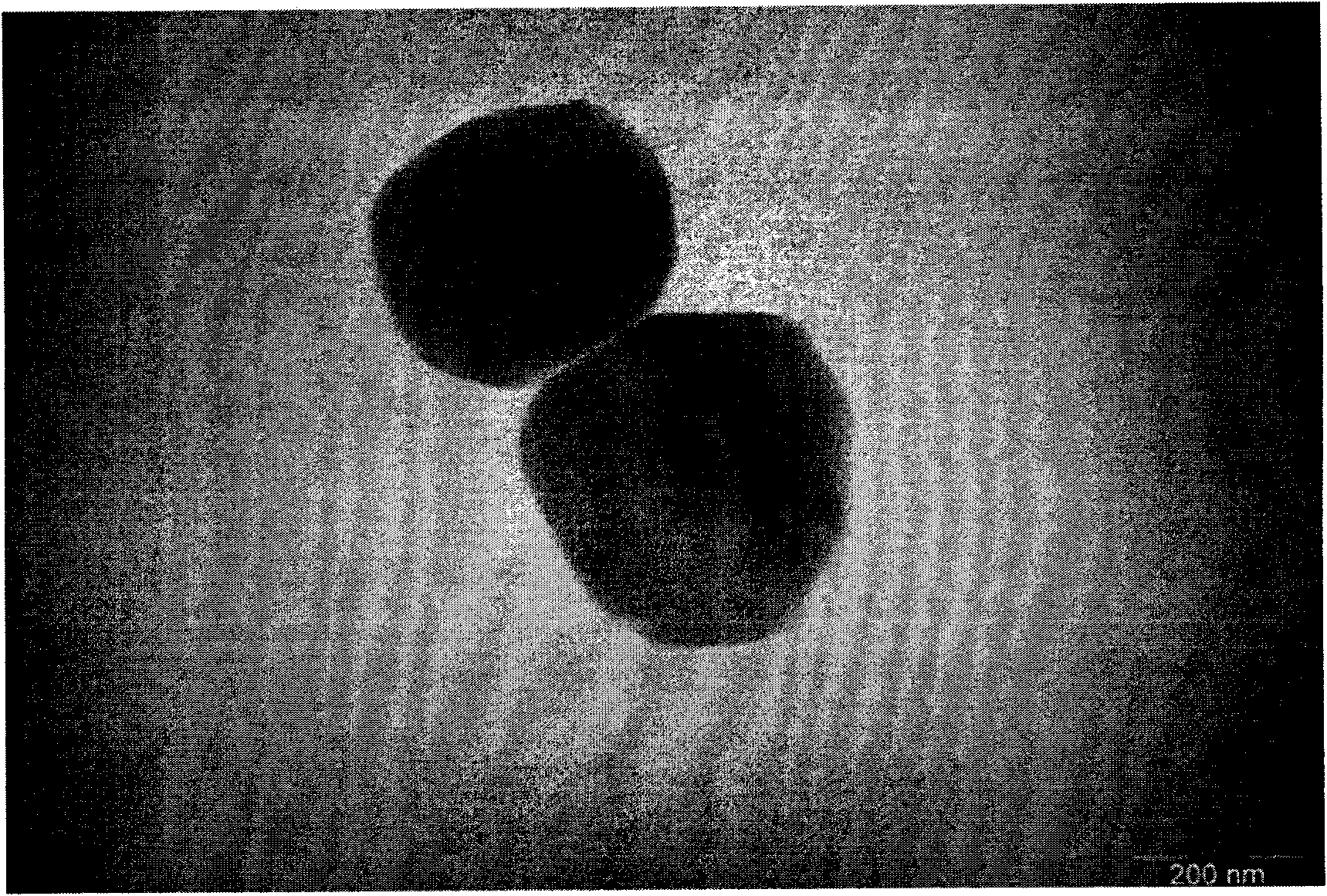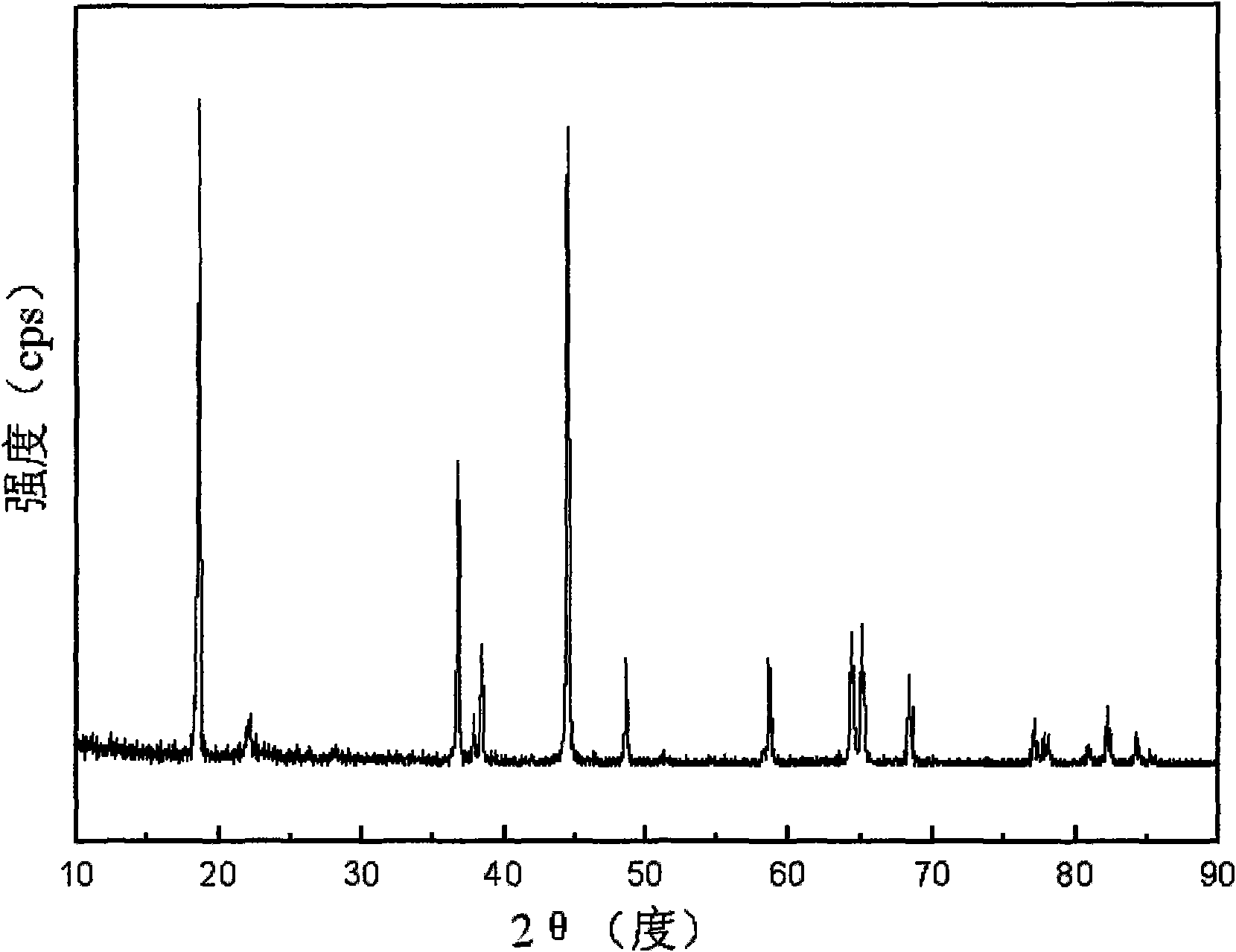Method for preparing submicron-sized anode material LiCoxNiyMnzO2 of lithium-ion battery
A technology for lithium-ion batteries and positive electrode materials, applied in electrode manufacturing, battery electrodes, circuits, etc., can solve problems that greatly affect material rate charge and discharge performance
- Summary
- Abstract
- Description
- Claims
- Application Information
AI Technical Summary
Problems solved by technology
Method used
Image
Examples
specific Embodiment approach 1
[0009] Specific implementation mode 1: In this implementation mode, the positive electrode material LiCo of sub-micron lithium-ion battery x Ni y mn z o 2 The preparation method is as follows: 1. According to the chemical formula LiCo x Ni y mn z o 2 , respectively weigh cobalt salt, nickel salt and manganese salt according to the molar ratio of Li element, Ni element and Mn element as x:y:z, and then dissolve them in distilled water to obtain system 1, where x Ni y mn z o 2 ; Wherein the concentration of cobalt salt in step 1 system 1 is 0.5~2mol / L; In step 3, the volume ratio of system 1 and system 2 is 1: 1, and the volume ratio of distilled water and system 1 is 2.5~10: 1, step 3 The reaction vessel described in was placed in a mixture of ice and water.
[0010] The ball mill used in this embodiment is a QM-3SP04 planetary ball mill produced by Nanjing University Instrument Factory.
specific Embodiment approach 2
[0011] Embodiment 2: This embodiment differs from Embodiment 1 in that the cobalt salt described in step 1 is cobalt sulfate, cobalt acetate or cobalt nitrate. Others are the same as in the first embodiment.
specific Embodiment approach 3
[0012] Embodiment 3: The difference between this embodiment and Embodiment 1 is that the cobalt salt described in step 1 is a combination of any two of cobalt sulfate, cobalt acetate and cobalt nitrate. Others are the same as in the first embodiment.
[0013] In the cobalt salt described in this embodiment, the two components are mixed in any ratio.
PUM
| Property | Measurement | Unit |
|---|---|---|
| Particle size | aaaaa | aaaaa |
| Particle size | aaaaa | aaaaa |
Abstract
Description
Claims
Application Information
 Login to View More
Login to View More - R&D
- Intellectual Property
- Life Sciences
- Materials
- Tech Scout
- Unparalleled Data Quality
- Higher Quality Content
- 60% Fewer Hallucinations
Browse by: Latest US Patents, China's latest patents, Technical Efficacy Thesaurus, Application Domain, Technology Topic, Popular Technical Reports.
© 2025 PatSnap. All rights reserved.Legal|Privacy policy|Modern Slavery Act Transparency Statement|Sitemap|About US| Contact US: help@patsnap.com



